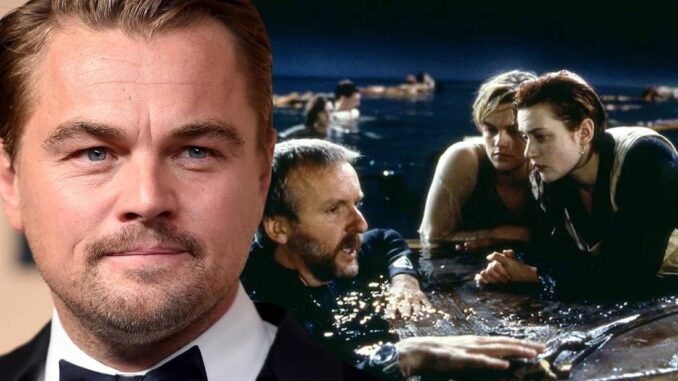
The set of James Cameron's Titanic was not merely a workspace; it was a vast, anachronistic world, a stage for a cinematic gamble of unprecedented scale. It was a place where perfection was demanded, where the line between visionary leadership and tyrannical precision often blurred. And in this meticulously crafted crucible, two titans – the director, James Cameron, a man known for his unyielding vision, and the young, intensely dedicated actor, Leonardo DiCaprio – reportedly danced on the very edge of pushing each other too far, a dynamic that illuminates the volatile, often brutal, beauty of artistic creation.
James Cameron, the architect of cinematic behemoths, approached Titanic with the precision of an engineer and the passion of a historical scholar. He was a general commanding an army, overseeing every bolt, every wave, every nuanced performance. His reputation for being demanding was legendary; he was known to brook no imperfection, to tolerate no less than absolute immersion. For Cameron, the film was a living entity, every component vital, every human element a cog in a massive, churning machine. He pushed his crew, his cast, and himself beyond conventional limits, believing that only through this relentless pursuit could the film achieve its monumental authenticity.
Into this fiercely controlled environment stepped Leonardo DiCaprio, a rising star then in his early twenties, brimming with an almost feral intensity and a burgeoning commitment to his craft. DiCaprio was not content to simply hit marks or deliver lines; he sought to inhabit his characters, to explore their depths, to find their authentic pulse. For Jack Dawson, the free-spirited artist from steerage, this meant infusing him with a vitality and spontaneity that occasionally chafed against Cameron’s meticulously pre-visualized world. It wasn't about defiance for defiance's sake, but a clashing of creative processes: Cameron's top-down, grand design versus DiCaprio's organic, inside-out exploration.
The "pushing too far" likely manifested in a subtle, persistent tug-of-war. DiCaprio, with his method inclinations, might have questioned lines, sought improvisation, or struggled with the immense technical demands that often dictated performance over pure emotional spontaneity. Imagine a scene where Cameron needed a specific movement for a camera track, while DiCaprio was lost in the raw emotion of a moment, finding it difficult to break character for a technical adjustment. Or perhaps DiCaprio's relentless pursuit of emotional truth led him to multiple takes, exploring nuances Cameron felt had already been captured, leading to frustrating delays on a set where every minute cost thousands. The tension would have been palpable: the director’s desire for control and efficiency meeting the actor’s need for freedom and authenticity.
This was not a simple clash of egos, though ego undoubtedly played its part. It was a fundamental friction between two distinct approaches to storytelling. Cameron saw the grand tableau, the physics of the disaster, the sweep of the romance. DiCaprio was tunneling into the heart of one man, seeking the unvarnished truth of his existence in a world on the brink. Each, in their own way, was striving for an ideal, and their individual paths inevitably intersected, sometimes collided. Cameron’s exasperation would have stemmed from any perceived deviation from his master plan, while DiCaprio’s frustration would have arisen from any constraint on his ability to fully embody Jack.
Yet, this near-rupture, this relentless challenging of each other, became an integral, if painful, part of Titanic's magic. The friction produced heat, and that heat forged something stronger, more resilient. Cameron, in pushing DiCaprio, likely extracted performances of greater precision and intensity than the young actor might have otherwise delivered. And DiCaprio, by pushing Cameron, by insisting on the raw, unpredictable humanity of Jack, forced the director to perhaps loosen his grip ever so slightly, allowing the character to breathe with an authenticity that transcended the technical marvels surrounding him.
The result was an iconic performance and a landmark film. Jack Dawson's youthful exuberance, his passionate idealism, and his heart-wrenching sacrifice resonated globally, in no small part due to the raw, lived-in quality DiCaprio brought to the role. And Cameron's Titanic, for all its epic scale, was grounded in a human story that felt real, alive, and profoundly moving. The tension between director and actor became a crucible, refining the elements of performance and narrative until they glowed with an almost unbearable brilliance.
The story of Leonardo DiCaprio nearly pushing James Cameron too far on the Titanic set is more than a Hollywood anecdote. It is an illustrative testament to the demanding, often uncomfortable process of creating art at the highest level. It reveals that true collaboration isn't always harmonious agreement, but can be a fierce, respectful struggle, where the very act of pushing boundaries – and being pushed in return – ultimately yields a more profound and enduring work. It is a reminder that sometimes, the most exquisite beauty is forged in the fires of creative friction.
